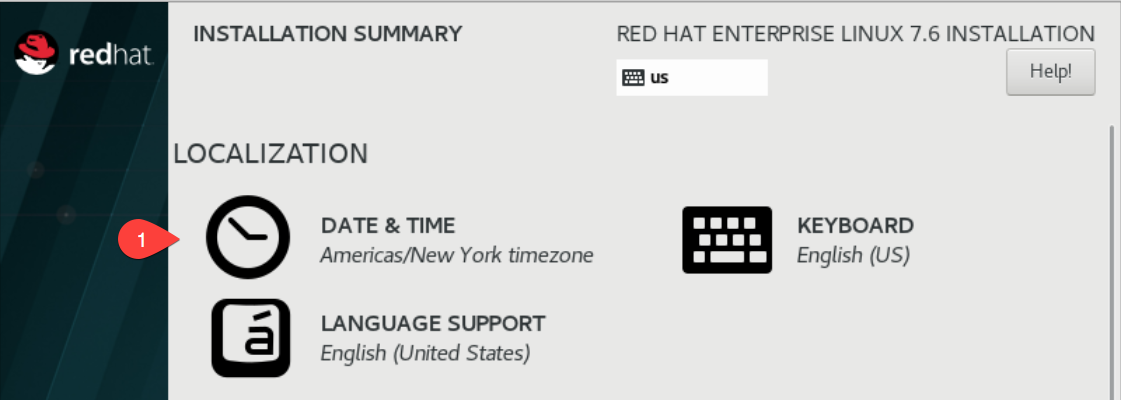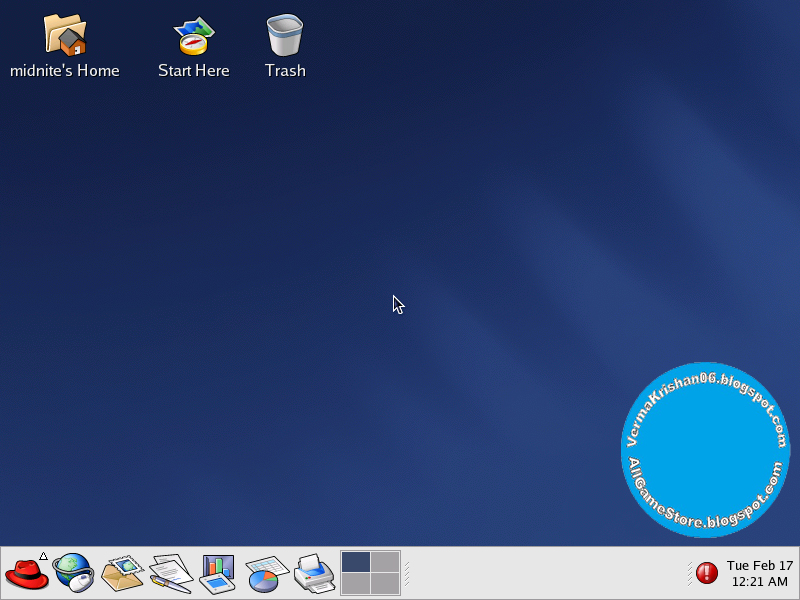Red Hat Linux 9 is an open source Linux distribution, the last version of the award winning operating system before the project was splitted into the free Fedora Linux project and the commercial Red Hat Enterprise Linux (RHEL) product. Distributed as installable-only ISO images.
I would suggest you to use centos. It has yum repository as well. Redhat for developer has applications usefull in development. If you want other applications, it is not available as comparison to centos. For a supported version of Red Hat: Red Hat Enterprise Linux For a no cost product sponsored by Red Hat: Fedora There are also a variety of RHEL rebuilds available: CentOS and Scientific Linux are examples. Old Description: What began as a better way to build software-openness, transparency, collaboration-soon shifted the balance of power in an entire industry. Dec 12, 2017 Red Hat Enterprise Linux is a modern and all new Linus OS which is developed under the banner of Red Hat. Red Hat Enterprise Linux 7.4 is somewhat old but still it contains all those features which are not present in many of the new OS out there. This software was provided for free and it was distributed under the name of Red Hat Linux.
Log inYour Red Hat account gives you access to your member profile and preferences, and the following services based on your customer status:
- Customer Portal
- Red Hat Connect for Business Partners
Not registered yet? Here are a few reasons why you should be:
- Browse Knowledgebase articles, manage support cases and subscriptions, download updates, and more from one place.
- View users in your organization, and edit their account information, preferences, and permissions.
- Manage your Red Hat certifications, view exam history, and download certification-related logos and documents.
Your Red Hat account gives you access to your member profile, preferences, and other services depending on your customer status.
For your security, if you're on a public computer and have finished using your Red Hat services, please be sure to log out.
Log outOverview
This overview covers the key steps for installing Red Hat Enterprise Linux 8 so you can get started with software development. Note: This tutorial does not replace the Red Hat Enterprise Linux 8 Installation Guide. Instead, this tutorial provides an overview of the key steps for software developers. For detailed instructions, see the RHEL 8 documentation.
You’ll install a system with a full graphical desktop.that you can use for exploring RHEL 8. Unlike prior versions of RHEL 8, there are no separate downloads for server, workstation, or desktop.
Before you Begin
To follow this steps in this guide you will need:
A no cost Red Hat Developer subscription and the RHEL 8 Binary DVD .iso file. When you register and download through developers.redhat.com, a subscription will be automatically added to your account.
You need to create bootable installation media for your system (USB drive, DVD, or virtual media) containing the RHEL 8 Binary DVD .iso file. Instructions for creating bootable USB drives can be found in this RHEL 7 doc.
Your Red Hat username and password. Your account was created during step one. You will need this to register the system attach it to your subscription. Completing these steps are required for your system to download software from Red Hat.
An available disk or free partitions. The disk or partition(s) you select during installation will be overwritten. Make sure you understand your selection before starting the installation to avoid accidental data loss.
A system that meets the following requirements:
- A 64-bit x86 or ARM machine
- 4 GB of RAM
- At least 20 GB of available disk space

Installation
Now you are ready to run the RHEL 8 installer.
TL;DR The installation steps are:
- Select software to be installed. Choose the Workstation base environment, add Development Tools, Graphical Administration Tools, and Container tools. Note: Do not select Server with a GUI at this time.
- Choose the disks/partitions to use for installation.
- Disable kdump to save memory.
- Configure and enable the network connection so that networking starts at boot. Optionally set the host name.
- Set the root password
- Create your regular user ID and make your ID an administrator so you can use
sudo.
1. Boot the RHEL 8 installer
Boot your system using the bootable installation media containing the RHEL 8 Binary DVD .iso:
Note: During boot, you can skip the media checking step by hitting the Esc key.
On the following screens, select your preferred language and keyboard layout to use during installation.
You should now see the main screen for configuring your installation:
2. Select software to be installed
Click Software Selection under SOFTWARE. We recommend that you:
- Choose Workstation on the left under Base Environment
- Then, choose Container Management, Development Tools, and Graphical Admin Tools.
3. Choose disks/partitions for installation
Click Installation Destination under SYSTEM. Choose the disks/partitions to use for installing RHEL. See the Red Hat Enterprise Linux 8 beta Installation Guide for more information.
Note: if your system only has one disk and you are using the whole disk for the installation, just click Done.
4. Disable kdump to save memory.
Next, To save memory turn off kdump by clicking Kdump under SYSTEM. Then, uncheck Enable Kdump.
5. Configure and enable the network connection
Next, configure the Network and optionally set the host name. Click Network & Host Name under SYSTEM. Then:
- Select your network adapter from the list. if you need to change any network settings click Configure… .
- Turn the adapter on by clicking the toggle to the right of the OFF button in the upper right corner. NOTE: If you do not enable the network adapter here, you will not have network connectivity when you boot the system.
- Optionally, you can set the system's host name on the lower left.
6. Begin the installation
When you are satisfied with your configuration, click Begin Installation.
7. Create your user ID and set the root password,
While the installation is proceeding, click Root Password to set the root (Administrator) password.
Next, create the regular user ID that you will use to log into the system by clicking User Creation.
IMPORTANT: Select Make this user administrator. This will enable sudo for your user ID.
8. Reboot and eject installation media
When installation is complete, click Reboot in the lower right corner.
IMPORTANT: While your system is rebooting, don’t forget to eject the installation media so that you don’t inadvertently reboot into the RHEL 8 installer again.
If you have a machine (or VM) that reboots too quickly to eject the installation media, you can try:
- Change the boot order in the BIOS
- Shutdown the system and then restart the system to. Eject the media during POST, or use the appropriate key for your BIOS (such F12, F10, Enter) to select a boot device.
- On VirtualBox, select Devices from the VM's window menu, then select Optical Drives -> Remove disc from virtual drive to eject the installation ISO. If the system has already booted into the installer, you will need to click Force Unmount. Then reset the VM, either through the Machine menu, or using the keyboard shortcut Right CTRL + R (Windows/Linux) or Left Command + R (Mac). The VM should then boot from the virtual hard disk.
Red Hat Linux 7.4 Iso Download Windows 7
System Registration
First Boot
When the system reboots, click License Information to accept the license agreement. On the License Information screen, Click I accept the license agreement under the text of the license.
System Registration During First Boot
Your system needs to be registered to download software and updates from Red Hat. When you joined Red Hat Developers, a no-cost developer subscription was added to your account. Registering your system attaches it to your subscription.
If you configured and started the network connection during installation, you can register the system now using the graphical interface. If you didn’t activate your network connection, follow the instructions below to register with the subscription-manager CLI.
To register your system, click Subscription Manager. On the next screen, if you need to configure a proxy click Configure Proxy, otherwise click Next.
On the following screen, enter your Red Hat username and password. When you joined Red Hat Developers, a Red Hat account was created for you. This the login that you use for Red Hat sites such as the Red Hat Customer Portal, access.redhat.com. Then, click Register.
On the Confirm subscription screen, if more than one subscription is listed, select Red Hat Developer Subscription. Then, click Attach. When registration completes, click Done.
Red Hat Linux Iso Image
Next, click Finish Configuration.
Log into the system with the user ID and password you created during installation.
During your first login, set your language, keyboard layout, and enable or disable location services. Then, connect your online accounts or click Skip. Next Click Start Using Red Hat Enterprise Linux. After you’ve reviewed the GNOME Getting Started info, close the window.
System Registration from the command line
If you didn't register your system during the first boot, you can register at any time using the command line. Start a Terminal window by clicking Activities in the upper left corner. Then select the Terminal icon on the lower left. Alternatively, start typing terminal in the search box and then hit enter to accept the Terminal auto-completion.
In the terminal window, start a root shell:
Next, register your system with Red Hat Subscription Management:
Enter your Red Hat username and password. When registration has completed, you’ll see:
Check that you now have the BaseOS and AppStream repos enabled with yum repolist:
Update Your System
Once your system has been registered, you can use the command line or web console to install the latest updates.

Updating from the command line
use yum update form within a Terminal session to install the latest updates.
Using the cockpit web console
Red Hat Enterprise Linux 8 includes a web-based console called Cockpit that simplifies administration tasks especially for users who are new to Linux.
Enabling the Cockpit Web Console
Out of the box, Cockpit isn't enabled. We recommend that you enable Cockpit. To enable it, run the command below one time. You don’t have to worry about Cockpit consuming resources if you don’t use it. The following command tells systemd to only start Cockpit when it is accessed.
By default, the system firewall will prevent access to Cockpit from the network. To allow access from the network:
Using the Cockpit web console
To access the Cockpit web console, start Firefox from the Activities menu, Then enter the URL: http://localhost:9090/
Log into Cockpit either your regular user ID or the root user ID.
To use Cockpit from the network use: https://<hostname>:9090/

Note: a self-signed SSL/TLS certificate is installed by default, which will generate a security exception because it signed by a trusted CA. You will have to agree to proceed.
Red Hat Linux 7.4 Iso Download Pc
For more information see Managing Systems Using the Web Console
Time to write code
Utilize these documents for creating your first applications on Red Hat Enterprise Linux 8.
Working with AppStreams
The first step is to see what modules are available the Applications Streams (appstream) repo:
Or, find just the modules named `nodejs`
From the output you can see that Node.js 10 is the default module to install, note the `[d]`. You could have simply typed the following to install the default nodejs module.
Red Hat Linux 6 Download
Or even, shorter using ‘@’:
The above commands would have installed the nodejs with the default profile. A profile is group, usually a subset, of the packages in a module. For this module the default profile is named `default. In the steps above, the `development` profile was chosen to get the packages in the development profile installed.
To find out more about a module, use one of the following commands: